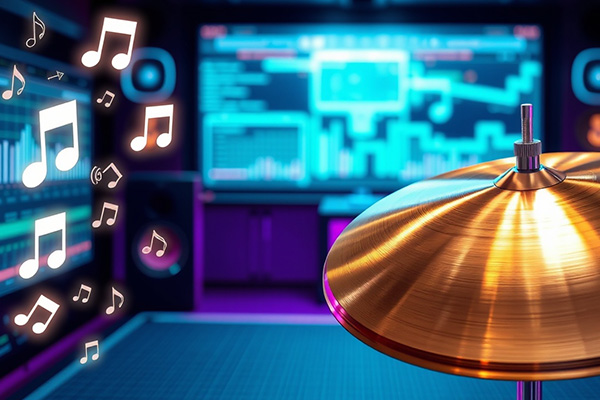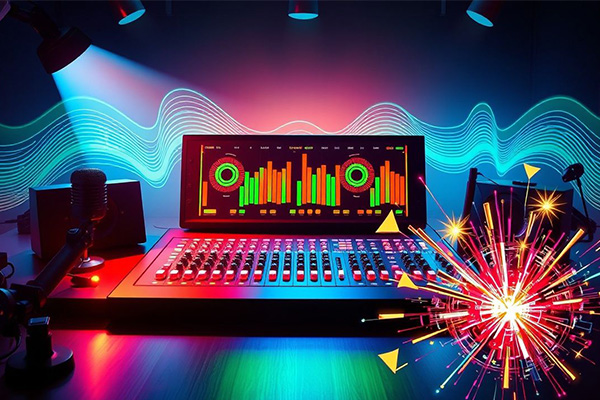In music production, every element contributes to the overall impact of a track, but few are as pivotal to its groove and feel as the hi-hat. Often overlooked in favor of kicks and snares, hi-hats are the glue that holds the rhythm together and adds personality to the beat. Crafting unique hi-hat grooves can elevate your music, giving it depth and character that resonates with listeners. The hi-hat serves not only as a rhythmic tool but also as a way to express creativity and individuality in your musical compositions. Think of hi-hats as the seasoning in a dish; while they may not be the main ingredient, they enhance the overall flavor and experience of the track.
Why Hi-Hat Grooves Matter
Creating unique hi-hat grooves is essential for building a captivating rhythm.
Understanding the role of hi-hats in various genres can inspire innovative approaches to your grooves. In genres like hip-hop, hi-hats can create a stuttering effect that adds to the laid-back vibe, while in electronic music, rapid fire hi-hat patterns can inject energy and excitement, driving the track forward. Experimentation is key—try layering different hi-hat samples and see how they interact with the other elements of your beat.
Moreover, layering multiple hi-hat sounds can enhance the richness of your beat. For instance, combining a soft, closed hi-hat with a sharper, more aggressive open hi-hat can create a dynamic interplay of textures. This technique allows for greater depth in your sound, making the hi-hats more prominent without overpowering the rest of the mix.
When crafting your hi-hat grooves, think about the rhythmic placement of each hit. Syncopation, or the displacement of expected beats, can create a compelling forward motion in your track. By intentionally placing your hi-hat hits off the main beats, you can create a more complex and engaging rhythm. This technique not only keeps listeners on their toes but also adds a layer of sophistication to your groove.
In addition to the basic functions of a hi-hat, it’s essential to explore how different types of hi-hat sounds can influence the overall feel of a track. For instance, a bright, sharp hi-hat can impart a sense of urgency, while a darker, more subdued hi-hat can create a mellow atmosphere. Use your DAW to experiment with various hi-hat samples, finding the ones that best fit the mood of your composition. Furthermore, consider the effect of open and closed hi-hat sounds—each brings its unique texture to the mix.
Hi-hats play a central role in creating the rhythmic texture of a track. Their rapid and repetitive nature means they often play the most notes in any given song. For example, in a three-minute track at 120 BPM, hi-hats could play upwards of 1,500 individual hits. This repetition makes them a prime candidate for adding subtle variation and humanization, which can prevent your music from sounding robotic or monotonous.
A well-designed hi-hat groove can:
- Enhance Groove and Dynamics: Hi-hats help define the swing and push-pull feel of a track, whether it’s tight and controlled or loose and relaxed.
- Add Color and Texture: Variations in velocity, timing, and patterns can infuse your music with energy and emotion.
- Guide Listener Focus: Hi-hats often act as a rhythmic counterpoint, subtly leading listeners through transitions and maintaining momentum.
Tips for Crafting Unique Hi-Hat Grooves
To create hi-hat grooves that stand out, consider the following strategies:
- Humanize the Hits: Small adjustments to velocity, timing, or pitch can mimic the nuances of a live drummer, adding life and authenticity.
- Experiment with Patterns: Start with basic eighth or sixteenth-note grooves, then introduce broken rhythms or offbeat accents. This can transform a static rhythm into a dynamic one.
- Use Effects Creatively: Automating filters, EQs, or even distortion can introduce dynamic shifts, keeping the hi-hats fresh throughout the track.
- Randomization is Key: Ableton Live’s randomize function is a powerful tool to create initial patterns. Combine this with manual tweaks to retain creative control.
- Layer and Pan: Layering hi-hats with subtle tonal differences and panning them slightly left and right creates a fuller stereo image.
Additionally, don’t shy away from incorporating silence or rests into your hi-hat patterns. These pauses can enhance the groove by giving listeners a moment to breathe, making the hits that follow even more impactful. Think of it as the ebb and flow of a conversation where the pauses can be just as powerful as the words spoken.
When experimenting with patterns, consider utilizing triplet rhythms. These can provide a playful swing and add an unexpected twist to your groove. Triplets often evoke a jazz or swing feel, making them a valuable tool in genres where groove is paramount.
Moreover, think about the context of your groove within the broader structure of your track. As sections change—from verse to chorus, for example—the energy and complexity of your hi-hat patterns can shift accordingly. Building tension in quieter sections with sparse hi-hat patterns and then unleashing a flurry of activity in the chorus can create a satisfying contrast that keeps listeners engaged.
Idea: Unlocking Unique Hi-Hat Grooves in Ableton
For those seeking to master hi-hat grooves, check out my video on how to create unique hi-hat patterns in Ableton. I demonstrate how to use the randomize function to generate inspiring rhythms and refine them by adjusting velocity and other parameters. This approach not only saves time but ensures every groove feels distinct and professional.
Conclusion
Hi-hats may be small in size, but their impact on your music is massive. Taking the time to craft compelling hi-hat grooves can set your tracks apart, making them more engaging and memorable. With tools like Ableton’s randomize function and a focus on subtle details, you can transform your hi-hats into a defining feature of your sound. Remember, the key to a great hi-hat groove lies in exploration and experimentation—don’t hesitate to try new techniques and sounds until you find the perfect fit for your music. So, dive into the rhythm, experiment boldly, and let your hi-hats shine. Your listeners will thank you!
Hi-hats may be small in size, but their impact on your music is massive. Taking the time to craft compelling hi-hat grooves can set your tracks apart, making them more engaging and memorable. With tools like Ableton’s randomize function and a focus on subtle details, you can transform your hi-hats into a defining feature of your sound.
So, dive into the rhythm, experiment boldly, and let your hi-hats shine. Your listeners will thank you!
Finally, consider collaborating with other musicians to gain fresh perspectives on your hi-hat grooves. Sometimes, a different pair of ears can lead to insights that elevate your music to new heights. Embrace the community around music production, share your creations, and seek feedback. This collaborative spirit can foster creativity and innovation, making your hi-hat grooves not only unique but also reflective of a wider artistic vision.



